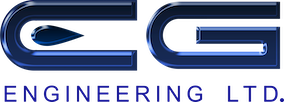Engineering & Drilling an Oil or Gas Well in Alberta
Drilling an oil and gas well can be a long and complicated process, depending on the location and field you are drilling in.
Here we outline what is needed before drilling a well, what drilling engineers do, and how oil and gas wells are engineered for optimal production and drilling efficiency.
What is needed before starting to engineer and drill an oil or gas well?
Register as an operator
Before you can drill an oil or gas well in western Canada, you must be a registered operator with the appropriate provincial regulatory body.
Identify a geological target
Based on the registered operator’s exploration and production plans, the petroleum geologists and geophysicists will identify a geological target.
The geological target is where they expect to find oil, gas, or other underground feature (such as salt caverns for storage wells). The geological target is also known as a bottom hole location.
Choose a surface location
Once a geological target has been identified, a suitable surface location is selected. The surface location is where the drilling rig and support equipment will be located.
Obtain licensing
Registered operators are able to apply for and obtain well licences from provincial regulators, provided that they meet the detailed requirements for their selected location.
What is drilling engineering?
Drilling Engineering is the process of planning, designing and costing the drilling operations of an oil and gas well.
Maximizing production and drilling efficiency
To maximize the potential production of oil and gas reserves and select the most effective drilling methods, drilling engineers work closely with petroleum geologists, reservoir engineers, and completions engineers.
Key engineering responsibilities
Drilling engineers’ key responsibilities often include casing design, cementing, mud composition and properties, rig specifications and pressure control equipment. Each of these components must be carefully considered to drill a well safely and efficiently.
Collaboration with completion and production teams
In addition, drilling engineers work closely with other teams to ensure the well is suitable for planned completion and production operations.
How is an oil or gas well engineered?
Based on the geological target and the specifications provided by the geology, reservoir, and completions teams, the drilling engineer will plan, design, and cost the drilling operations.
Typically, the engineering deliverables include a stick diagram, drilling program, and cost estimate or Authority For Expenditure (AFE).
Stick diagram
The stick diagram is a single page reference document that includes all relevant well information (licence number, pressures, formation, casing size, cement details, etc.).
Drilling program
The drilling program is a step by step document that details exactly how the well should be drilled.
The drilling program includes the stick diagram, plus additional area- and well-specific information including safety and operations procedures to follow (tripping speeds, LOT or FIT’s, etc.).
Cost estimate or Authority for Expenditure (AFE)
The cost estimate or AFE is the authorized or planned cost to drill the well, based on estimates of the equipment, time, and personnel required.
Sourcing and procuring wellsite services
Once a program, stick and AFE are in place services are sourced and procured.
This will include all the planned equipment that will be needed during the well including selecting a drilling rig, directional, bits, mud, rentals and much more.
What about drilling engineering for unconventional or difficult wells?
Unconventional wells
Unconventional is a broad term that includes any wells drilled outside of conventional techniques.
Wells labelled as “unconventional” typically require specialized drilling or recovery techniques. For example, under-balanced horizontal drilling or steam-assisted gravity drainage (SAGD).
Unconventional drilling techniques are often required for tight-gas sands, gas and oil shales, coalbed methane, heavy oil, and oil sands deposits.
Pad drilling programs
Pad drilling refers to the drilling of multiple oil and gas wells from a single surface location or pad.
Pad wells are often drilled horizontally in opposite directions in order to access a large portion of the downhole reservoir while minimizing the amount of surface impact. They are commonly used in SAGD and shale drilling operations.
High pressure high temperature (HPHT) wells
HPHT wells can be some of the most technically challenging wells to drill. This can be due to a number of factors including: mud properties, kick/loss scenarios, and wellbore stability issues.
To address the expected conditions of an HPHT well, the drilling engineer will adjust the drilling plan, design, and costing to include specialized drilling equipment and additional safety procedures.
How is an oil or gas well drilled?
Preparing the lease
Once all the services are awarded a lease is built at the selected surface location and the well centre is marked by surveyors.
Preparing the lease typically involves removing the top soil and building a well pad to support heavy drilling equipment.
Depending on the location, weather, and drilling program, additional preparations may be required to build/improve roads, protect environmental features, and accommodate property owners.
To meet regulatory requirements and prepare for future abandonment and reclamation, environmental assessments are often collected at this point.
Spudding the well
The drilling rig and ancillary equipment is moved in and the well is “spudded”. The surface hole is drilled, cased, and cemented to protect any fresh water sources and base of ground water protection (BGWP).
Drilling the well
Subsequent hole sections are drilled, cased and cemented which may include intermediate and production casing strings.
Total depth and logging
Once the well is drilled to Total Depth (TD’d) it is logged to obtain valuable data about the rock properties and reservoir.
After logging is complete, the well is cased and cemented. When all of the wells planned for that surface location are drilled, logged, cased, and cemented, the drilling rig is moved off of location.
At this point the well is drilled and ready for completions operations to begin.
Completing the well
Every oil or gas well needs to be “completed” to make it an efficient and safe production well.
We wrote an article summarizing the completions process. Read more →

